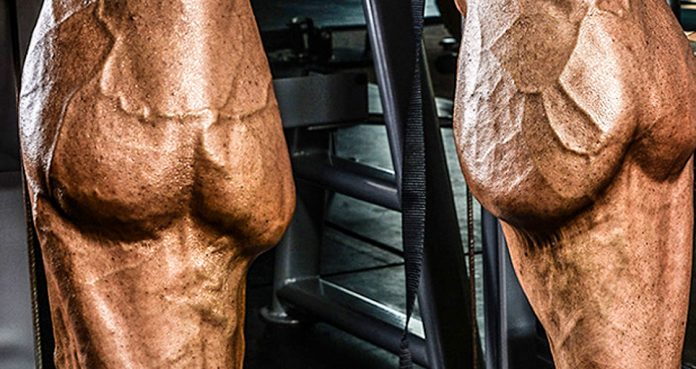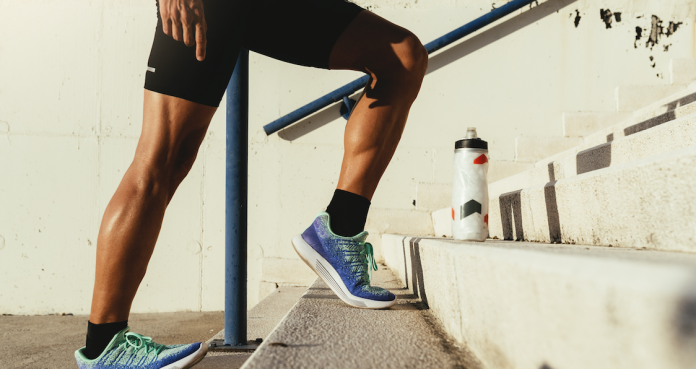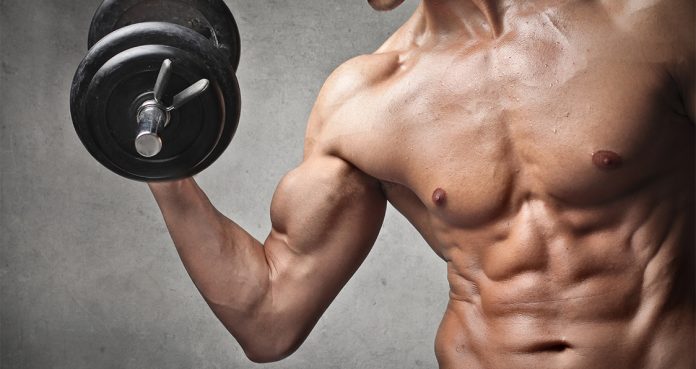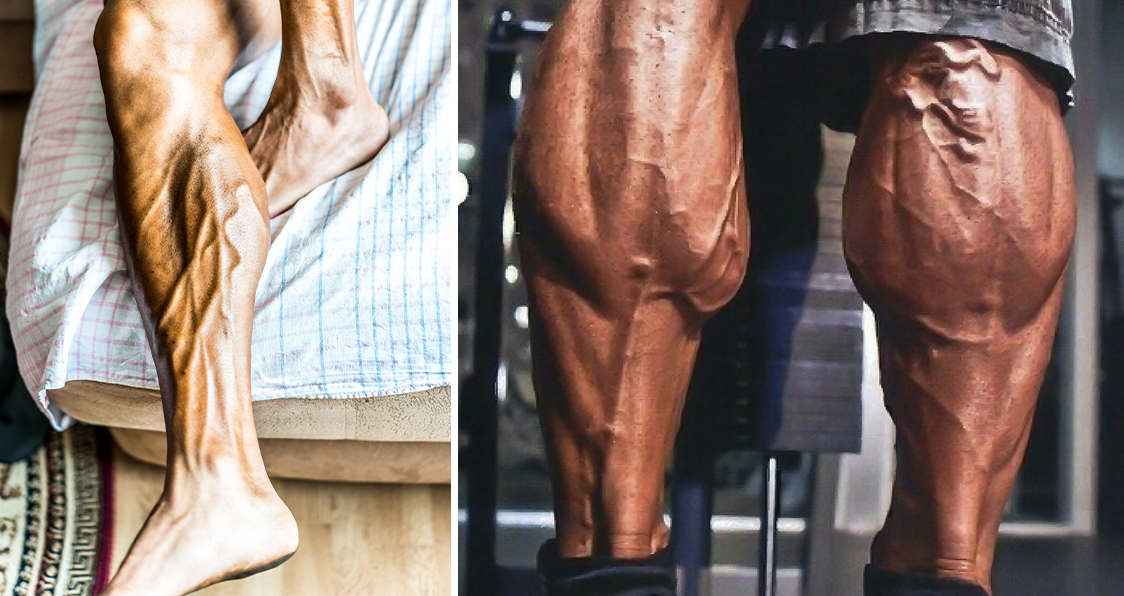Tag: Calves

Best On The Planet – Calves Which Should Be Labelled Cows
These Are The Biggest Calves On Earth
Calves can be one of the hardest muscles to grow. People with small calves will attest how stubborn the small muscle group can be. If you have small upper legs, lagging calves can make your legs look weaker.
A pair of fully-grown cows can add to the aesthetics and symmetry of your physique. In this article, we’ll be listing people with the best calves so that you can draw some much-needed motivation from them.
Flex Lewis
Flex Lewis is the 7X 212 Mr. Olympia champion. Lewis’ size and conditioning are top-notch, and he virtually has no weak spots. His calves look like they have a life of their own and can easily overshadow anyone around him.
Ben Pakulski
View this post on Instagram
When you look at this picture, what comes to mind? Hard work? Genetics? Steroids? One thing I Suggest you NEVER do is discount how much work went into creating something. You have NO idea the amount of time, pain, discipline, and obsession went into creating this physique. Most people will fail in life because they discount the amount of time and work it’s going to take to get accomplish their goal, so when it gets hard they crumble like dry leaves. Whatever you think it took, multiple that by 20. And the next goal you set out to crush, multiply your expectation by 100 and hope it’s even harder. Never ask for it to be easy. Ask for you to be better. Im grateful for my pain, im grateful for my struggles, they made the man I am and will continue to push harder than most people ever conceive because I’ve been dark places most people aren’t willing to go. What struggles are you grateful for? #YouCantDoWhatIDo #mi40gym #muscleintelligence #mi40 #benpakulski #mi40life
A post shared by Ben Pakulski (@bpakfitness) on May 18, 2019 at 3:38pm PDT
Ben has earned a name for himself when it comes to training scientifically and making use of all the research available to him. Judging by his calves, his physiological training research seems to be paying off.
Kai Greene
Many people consider Kai Greene to be an uncrowned Mr. Olympia. Kai’s interest and talents in sketching push him to focus on his muscular proportions and conditioning. Greene’s shredded cows are proof that he leaves no stones unturned in his training.
Dorian Yates
Dorian Yates is the OG of size and conditioning in the bodybuilding world. His sheer muscle mass made him stand apart from the crowd. Yates’ legs, in particular, had a crazy definition. It was something people had not witnessed before.
Kris Gethin
Gethin is a transformation expert and a celebrity trainer. His calves seem to evolve into bigger and meaner cows with every passing year. Kris’ calves will make you want to train your tree wigs harder and smarter.
Tom Platz
It’s not possible to talk about the most muscular legs and leave Tom Platz out of the conversation. Although it is Tom’s upper legs which get the most attention, we want to use this opportunity to highlight his calves.
Jason Huh
Jason is a monster, and the size, vascularity, and graininess of his calves blur the line between awesome and gross – in a good way. Jason’s hardcore training approach can psyche you up for your calf workouts.
Frank McGrath
Frank McGrath is arguably the most vascular athlete of all times. He might also be the person with the most vascular calves on the planet. Frank is one of the people who makes gaining muscle mass look easier than it is.
Big Ramy
Big Ramy is called that for a reason. His larger than life-size can dwarf people around him. Ramy’s legs are his one of the stronger points and his calves add to the symmetry and size illusion.
Jay Cutler
Cutler is a 4X Mr. Olympia. His monstrous legs played a huge role in dethroning Ronnie Coleman to win the Mr. Olympia title. Jay pushed the boundaries when it came to testing how far the human body could go.
Which is your favorite food out of the 10 listed in the article? Let us know in the comments below. Also, be sure to follow Generation Iron on Facebook, Twitter, and Instagram.

Check Out This Intense Lower Body Workout for Ripped Calves and Hams
Leg day. There. I said it.
Leg day can be one of the most challenging and often neglected aspects of being a bodybuilder. It’s confusing, it’s hard, and — let’s be honest — it wants what chest day has. Have you been training your legs for a long time but feel like your progress has stalled? Check out the intermediate lower body workout below for an excellent way to train your calves and hamstrings.
Please remember that this is an intermediate level workout intended for those who already have at least 1 – 2 years of serious strength training. We have a wide variety of leg workouts available here at Generation Iron to accommodate those who are just looking to get started.
How long should I be practicing this workout?
You can adjust the program to your level of comfort. Ideally, it should be performed for 8 weeks. However, if you’re stretched a little thin right now and don’t have that much time to get in a workout, you can modify it to be shorter and last for 6 weeks — though don’t expect incredible, long-lasting muscle to be built in that time.
Or, if you’re in a headspace where you’re really trying to motivate yourself, you can go harder and do it for 12 weeks. The most important thing is to make it work with however you’re currently working out, otherwise you won’t actually do it.
How often should I do it during the week?
You should cycle through lower body and upper body splits throughout the week however you feel most comfortable. Assuming you workout most or every day, you should consider doing this lower body workout two to four days every week, depending on how much you’re working out the other parts of your body.
Just try and match however much work you’re putting into your hams/quads with what you’re doing for your upper body and you’ll be fine. Also, make sure to take rest days in between those days so your muscles have a chance to heal.
Intermediate Leg Workout for Ripped Calves and Hams
Seated Leg Curl — 5 sets of 5 – 10 reps
Start off with a seated leg curl. Many of the muscle groups in the leg respond well to high intensity training rather than high endurance training, so it’s good to start strong and hit it hard.
Stiff Leg Deadlift — 5 sets of 5 – 10 reps
The stiff leg deadlift is an excellent modulation of the standard deadlift that really helps you feel the burn through the back of the leg and develop resistance in those muscles.
Standing Calf Raise — 5 sets of 8 – 12 reps
Moving into the calf portion of the workout, this is a great way to warm up that area of the body and build muscle.
Leg Press Calf Raise — 5 sets of 8 – 12 reps
A little bit more challenging than the standing calf raise, this helps build muscle in these groups by gradually increasing the intensity.
Donkey Calf Raise — 5 sets of 5 – 10 reps
This really encourages muscle growth in the lower leg and can be challenging at this point, so feel free to reduce the amount of sets/reps in this group to your comfort level.
Seated Calf Raise — 5 sets of 8 – 12 reps
Moving into the cool down period of the workout, this calf raise shouldn’t be skipped, since it builds the foundation for workouts to come.

Hardest Muscles To Build
The hardest muscles to isolate and build mass.
Everyone has that specific set of muscles that infuriates them. That one spot where no matter how hard you train – no matter how hard you push yourself, you just don’t see the results you want.
But if you ask around the gym you’d probably find that there are some muscles most people agree to have a problem with. Those universal complaints that most bodybuilders have even after years of hitting the gym.
As always, we are happy to help by breaking down these tricky muscles and hopefully providing you with a better way to deal with them – leading you on a more pleasant path towards maximizing your over all muscle gain.
First thing’s first though, there is something to be said about genetics. As in, some people just have a harder time with certain muscles because of the DNA coursing through their body. It can’t be helped and sometimes that just means you have to work harder than the person next to you.
Also, proper form is key for all of these muscle groups. It’s key for any workout really – but part of what makes these specific ones so hard is because most people do not use correct form. So keep that in mind as you move forward with isolating these muscles. Whatever you are doing, you always want your spine to be properly aligned and make sure that you perform the full range of motion for the muscles you are working out.
CALVES
These are big ones. Calves are often either the most complained about muscle to build mass or the most overlooked. Either way they often pose more of a problem compared to other muscle sets. And there’s an actually a reason behind why they are so challenging. The anatomical configuration of the calf muscles resists the act of hypertrophy. Aka – by nature they literally resist muscle synthesis.
What is often the problem is that most people treat calves as an extra at the end of a workout – but because the calves are so much harder to develop they actually need to be focused on intensely. They key is to not make your calves an afterthought.
Here’s a breakdown on the three major muscles that make up the calves:
1. The gastrocnemius muscle (this is what gives the calf its curved shape).2. The soleus (the long flat muscle underneath).3. The Tibialis Anterior (this is the large frontal muscle).
That third one, the Tibialis Anterior might have surprised you. That’s because it is often overlooked when it comes to building those calves – which in turn makes the calves such a challenge for most people.
You must create a well structured workout routine that focuses on all three of these muscles in order to actually see growth. If you can focus on those then you will start to see some changes coming your way.
Here are a few examples of exercises you can do to pinpoint those calf muscles.
Barbell Seated Calf Raises Reverse Calf Raises (These will hit those oft overlooked Tibialis Anteriors!) Standing Barbell Calf Raises
LATS
The Latissimus Dorsi is another muscle that can be a real stinger in your workout routine if you don’t know the best ways to isolate and use correct technique. The main problem is that it is almost impossible to truly isolate the lats. What’s most important is to cut back on the amount of weight in order to perform the reps at a full range of motion (remember?). This will build the foundation for your lats leading to building actual mass in that area.
Surprisingly chin ups and pull ups are very effective in building your lats. Often experienced bodybuilders will be able to perform these with such ease that they use a dip belt with extra weight to push themselves even further. Elbow position is one of the most important aspects behind this. If your elbows are out wide you’ll trigger your upper lats. If your elbows are in tight you’ll be hitting up those lower muscles. Keep this in mind when performing your workout routine.
Also make sure to keep your hands facing away or down in order to maximize the amount of lat involvement.
Here are a few other suggestions to help build those back muscles.
Straight-Arm Pulldown Close-grip front lat pull downs Kneeling high pully rows One-arm standing cable rows
There you have it. Everyone may be different – but hopefully you now have a better understanding on how to handle two of the more challenging muscles over all.
What is your most challenging muscle to build? Let us know in the comments or shout it out to us on Facebook and Twitter!

10 Reasons Why You’ll Never Have Big Calves
Calves are one of the most underrated body parts. A pair of chiseled calves can arguably overshadow shirt-ripping arms. But it’s easier said than done, lower legs can be a stubborn muscle group to develop.
Look around your gym, and you’ll see many guys flexing their arms and pecs in their mirror, but you’ll hardly see anyone showing off their calves. Turning your calves into full-grown bulls tests your grit and mettle. It’s also what separates the men from the boys.
Don’t get us wrong, this article is not meant to discourage you. We have put together a list of reasons why most people fail to build their calves. Avoid committing these mistakes, and you’ll be the owner of two big and beautiful cows.
10 Reasons Why You’ll Never Have Big Calves
Treating Calf Workouts Like Accessory Work
If we got a dollar every time someone called it a day after completing two exercises in a calf workout, we’d have our own Bitcoin fund by now. Some people think that since calves are a relatively small muscle group, they don’t need to go too hard on them.
Your lower legs are used to carrying around your bodyweight throughout the day. If you want them to grow, you’ll have to do more than just a few sets on the seated calf raises. Treat your calves like accessories, and they are going to remain that way.
Using Too Much Weight
Most people let their egos get the better of them in the gym. They put on more weights on the bar than they can handle. A limited range of motion is one of the most common mistakes people make while training their little toothpicks.
Range of motion is the name of the game when it comes to calf development. You should be on your toes (just like a ballerina) at the top of the movement and your heels should be a few centimeters off the floor at the bottom of the lift.
Training Too Little
Overtraining is one of the most misunderstood concepts in bodybuilding. Gym bros love to flaunt their broscience on the subject whenever they get a chance. Noobs are advised by the bros to not train their muscles more than twice a week.
The sad news here is that most people can’t train, if they wanted to, with the intensity and volumes required to hit the state of overtraining. There is a big difference between being sore and being overtrained.
Overtraining can impact your CNS (central nervous system) and immunity. How many people do you think can train with the fervor required to overtrain in every single workout? Since your calves are used to taking a beating, the rule of thumb for calf training should be to train them every day if they aren’t sore.
Training in the State of Exhaustion
Many people train their calves after they have been exhausted by a leg workout. These people follow their intuitions and get to the lower leg workout without any planning due to which they end up doing the exercises they’re comfortable performing.
If your calves are lagging, you should train them at the beginning of your workouts. Your other option would be to train them along with your upper legs using super-sets. You can’t expect to build monster calves while you’re out of gas and running on fumes.
Not Hitting Failure
Not training to failure is the extension of the overtraining mentality. Calves get the nastiest of pumps when you train to failure. Not everyone can handle the pain and hence people fall off after doing 10-12 reps.
You aren’t going to see any gains in that rep range. Your calves are used to taking a lot more workload as compared to what you do in your workouts. Training until muscle annihilation and then pushing through it is where the gains lie.
Low Intensity
When it comes to training calves, it’s best to avoid the intensity and volume debate. You need to get the best of both worlds and should be doing high reps with lower weights as well as lower reps with higher weights.
You can add a new dimension to your workouts by using time stops for your sets instead of the usual repetition stops. Instead of doing 12-15 reps of a calf exercise, perform a set straight for two minutes without any rest.
Time under tension (TuT) can also play a major role in developing your calves. Follow the 5:2:2:2 rep tempo (five seconds while lowering the weights, a two-second hold at the bottom, two seconds on the way up, and a two-second contraction at the top) to annihilate your calves.
Training Calves as Single Muscles
You’ll never be able to develop the inverted heart-shaped muscle on the back of your lower leg if you treat it as a single muscle. Your calves consist of three heads and you need to target each head separately.
On a calf raise exercise, keep your feet parallel to each other on the platform to target the medial head. Keeping your toes together and heels apart (forming an ‘A’) will target your outer calf head, and placing your toes apart and heels together (forming a ‘V’) will hit the inner head.
Using the Same Exercises
If your calf exercise arsenal consists only of seated and standing calf raises, you’re not going too far in the lower leg game. The stubborn calf muscles will get used to your workouts soon and stop responding if you don’t keep switching your exercises frequently.
Donkey, smith machine, bodyweight, leg press calf raises, to name a few, should be a part of your lower leg workouts. Your goal should be to not repeat the lower leg exercises before a couple of weeks if you train your lower legs four times a week.
Recovery – massages
Every person has a different muscle composition. Most people with tiny calves have a tight fascia which can require some extra work other than the workouts. Visiting a physiotherapist and getting deep-tissue massages every week can help ignite growth in your calves.
Not Deploying Different Training Principles
Most people use advanced training principles like dropsets, supersets, intraset stretching, BFR training for every muscle group except their calves. Calves are a muscle group that needs these advanced techniques for breaking the plateau.
If you’re serious about building your lower legs, you’ll have to stop this step-motherly behavior. It’d be great if you showed your calves the love they deserve and made up for all the times you screwed up.
How often do you train your calves? Let us know in the comments below. Also, be sure to follow Generation Iron on Facebook and Twitter.
- 1
- 2
